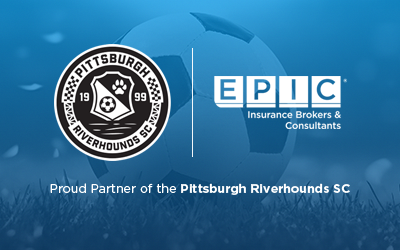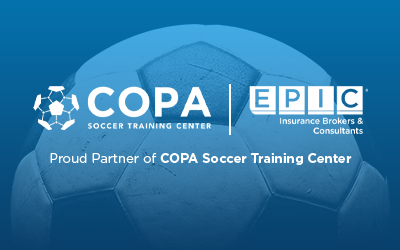What have we learned in retrospect?
For those who dealt with Property & Casualty renewals throughout 2019, the market appeared dazed and confused. Year-after-year catastrophes around the globe, along with nuclear verdicts in auto liability have exerted serious pressure downward on underwriting and subsequent pricing.
This is distressing insurance markets in ways few have experienced before. The “hard market” echoes painfully from the past. Capacity, having been relatively free and easy in recent years, has abruptly retreated to the sidelines, reeling from red ink. But why?
Record Insurance Losses in 2017, 2018, and 2019
Greater frequency of catastrophic events like hurricanes, floods, and wildfires, coupled with continuous rate decreases in past years, drove more companies to evaluate their risk tolerance and look for greater asset protection.
Three of the top six largest losses since 1970 occurred in 2017. There have also been over $30B in wildfire losses in the past three years making it very tough for insurers to control costs.
Top 10 Insurance Losses since 1990:
- Hurricane Katrina (2005)
- Japan EQ/Tsunami (2011)
- Hurricane Maria (2017)
- Hurricane Sandy, Storm Surge (2012)
- Hurricane Irma (2017)
- Hurricane Harvey (2017)
- Hurricane Andrew, Storm Surge (1992)
- Terror Attacks on the World Trade Center, Pentagon, and other buildings
- Northridge Earthquake (1994)
- Hurricane Ike, Flood Damage to Oil Rigs (2008)
What’s Next for Lloyd’s Marine, and Domestic Property & Casualty Markets?
While underwriters have been heard to talk tough before, diminished capacity may mean that this time around they can make higher premiums stick. About a dozen Lloyd’s syndicates have either dropped marine underwriting altogether, or at least pulled out of one or more marine lines.
Factors at work include the increasing incidence of extreme weather events, growing claims volatility, and accumulation risk in conjunction with “easy” capacity to keep rates soft in a climate of tough competition, as well as simply getting the pricing wrong.
Other syndicates will almost certainly join the rush for the door after Lloyd’s of London last year ruled that “consistently loss-making syndicates” — defined as those that have failed to register a profit for the past three years — will be placed under additional scrutiny.
Rate Increases Either Way
Better underwriting discipline is one obvious solution, but of course, underwriters have already been doing their level best to price correctly over the last period; without success. The other obvious answer is a hefty rate rise, perhaps in the order of 50-100%, or more.
“We have had more than a warning shot across the bow, and we are in danger of being holed below the waterline with the next shot. We have got to learn from what we have done badly over the past five years.” (Source: Lloyd’s List)
Navigating the Road Ahead | Three EPIC Strategies
- Present Yourself As a Better Risk, Using Data Analytics | Let the data speak for you and differentiate you as a better risk. A financially strong organization with the right pre-loss and post-loss mitigation strategies, backed by data analytics (loss forecasting/predictive modeling), can navigate a hard market relatively safely.
- Improve your Risk Profile: Develop Strong Carrier Relationships | When is the last time you met with your underwriter to review your operations and your approach to enterprise risk management? How can an insurance carrier accurately rate your risk without getting to know you and your business? Get to know your underwriters. While we can’t control the market, we can control how your risk profile is perceived by the market. In a hard market, preparation is key. Get with your EPIC advisor earlier than you normally would to tackle the challenges you may face on your upcoming renewal. The more time you and the carrier(s) have to put together a strategy, the more favorable outcome you will have.
- Retain More Risk | If you are “Best in Class,” with a clean loss history, experiencing unjustified premium increases due to market conditions, this advice is for you: Retain more risk and reduce your dependency on insurance. Ways to retain more risk can start with increasing your deductibles and reducing coverage limits on specific lines. Alternative risk financing strategies can be a game changer. Utilizing captive insurance models allows you to put more skin in the game and earn the financial rewards for your efforts with proactive risk management, via owner equity and greater control over long-term costs. Keep in mind this approach isn’t for everyone and will require executives and owners to invest and rely heavily upon safety and risk management protocols. The benefit is ultimately being able take control over rising costs, long-term.
EPIC’s Wine Program
Successfully managing risk by identifying and controlling potential sources of loss is the most effective way to protect your winery and reduce its insurance costs. Dedicated EPIC safety and claims consultants set us apart and are essential to this strategy.
We deliver comprehensive, cost-effective, leading-edge products and services from the world’s top insurance companies and specialty carriers. We know our business and yours, which allows us to represent you intelligently and aggressively in the marketplace.
Related Content
Programs
Wine
Successfully managing risk by identifying and controlling potential sources of loss is the most effective way ...
Industries
Food & Beverage
In the business of food and beverage, there is only one objective, to deliver excellence. Our brokers with ...
Products
IMPACT Risk Partners, a division of EPIC
If your priority is achieving superior business results with a productive workforce, count on us to help you ...


